Like Macro work where basic optical principles
become and issue underwater photography has its own issues.
Underwater light changes and becomes more blue - the deeper
we go the more it changes. The intensity of light also drops
off the deeper we go down and the clarity of the water also
plays a part in what the image looks like. 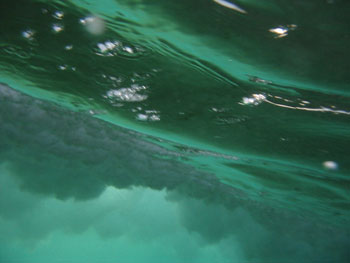
|
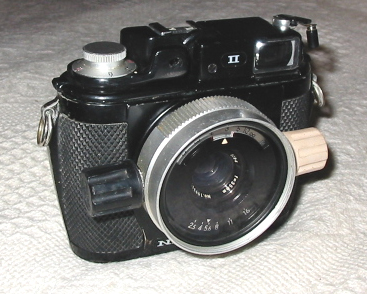
Nikonos II
- The standard lens for this camera is 35mm - on land it
gives a wide angle view- under water it give a standard
angle of view.
|
.This
is why many underwater photographers use flash lights or
strobes. I find it interesting that the first flash bulb
was actually designed by Louis Boutan in 1893 in an effort
to make pictures underwater. To allow the magnesium to burn
underwater, the substance was encased in a watertight bulb
filled with oxygen. The bulb was ignited by heating a fine
platinum wire with electrical current.
Fine
particles suspended in the water no only obscure vision,
they reflect light from a flash or other light source.
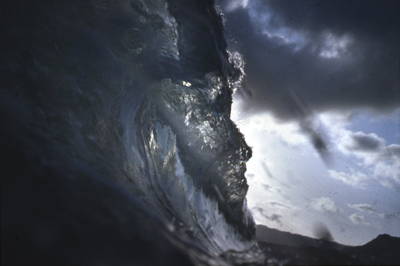 |
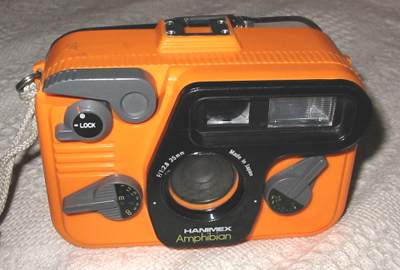
Hanimex Amphibian
|
This is the Minolta Weathermatic A, a waterproof compact camera which uses 110 size cartridge film, made in Japan and dating from the 1980s. The camera can be used underwater at depths down to 5 metres, the specification is as follows: Lens: Rokkor 1:3.5/26mm (4 coated glass elements in 3 groups)
Focusing: five distances selectable by turning the knob with the 5 distance symbols
Shutter: metal blade shutter with fixed speed 1/200 sec.
Aperture: 3 apertures selectable with a knob, one for sun, one for clouds or one for flashlight
Viewfinder: bright frame finder with parallax correction marks, low light indicator and focusing symbols
Flash: bult-in, selectable with aperture switch
Film advance: by lever
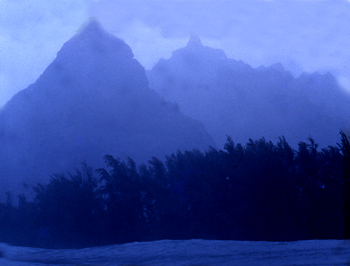 |
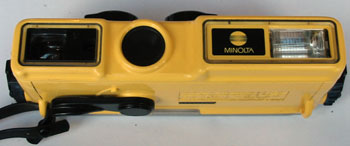
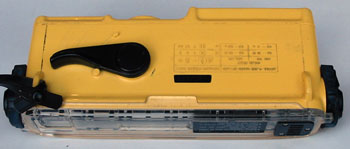
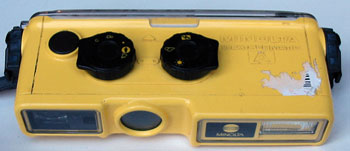
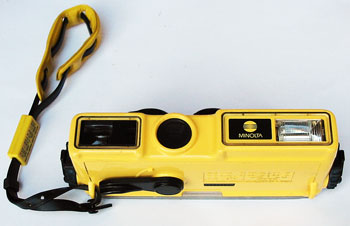
|
The
focal length of the lens also changes underwater. So a 35mm
lens on a 35mm camera is actually about 50mm. We can see
this effectively when we take images with the lens half
out of the water and half under where a leg or are of a
person is distorted.
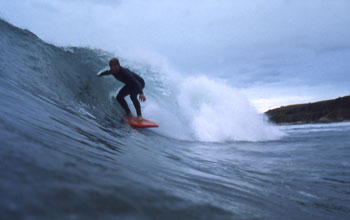 |
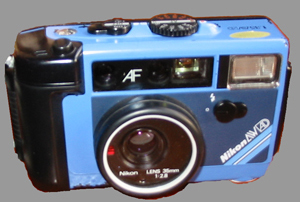
Nikon Compact
35mm film camera - This compact camera has many features
- auto focus - auto exposure- built in flash and limited
manual features
|
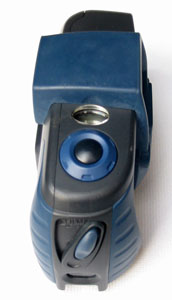 |
Minolta Vectis GX1
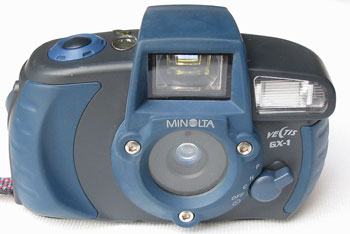
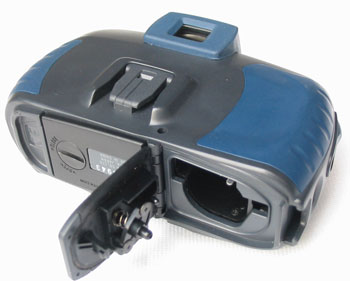
|
Surfing
While the wide-angle lens gives a wonderful perspective and
a great depth of field that he has used in many of the water
shots, it also means that the photographer has to be very
close to the action to fill the frame. In any of the images
where the lens is partly underwater, you might notice that
the perspective changes.
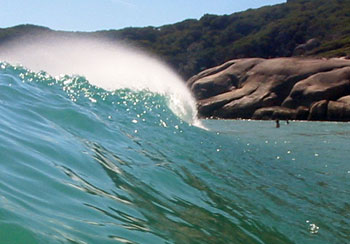
|
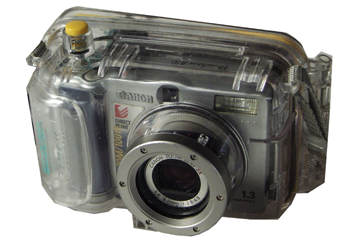
Compact
Digital camera in underwater housing - note the facility of
all controls on the back.
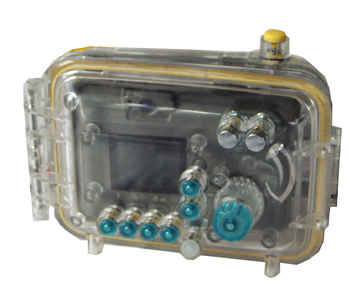
|
| Canon
Sure shot A1 - 35mm film camera |
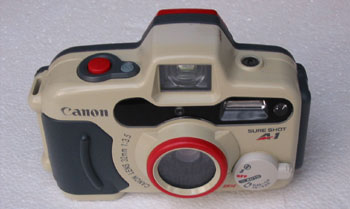 |
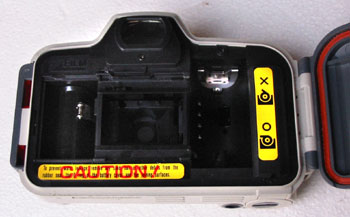 |
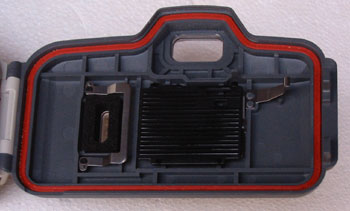 |
Under
water the focal length of the lens is increased by about
a third. This means a 35mm lens on a 35mm camera actually
gives the same perspective as a 50mm lens in air. Water
drops of the surface of the lens can also be a problem and
many photographers use a wetting agent that releases the
water evenly.
If
you really want a blast track down the classic movie by
George Greenough titled Crystal Voyager – the last
13 mins have the most amazing footage – Pink Floyd
wrote the sound track for free. Greenough was the first
master of this. Also check out a series of movies titled
the history of surf cinema photography. It will give you
a context to the history of film.
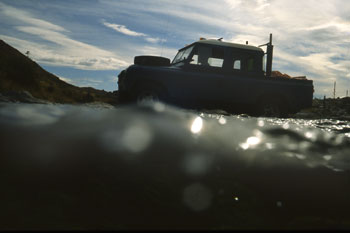 |
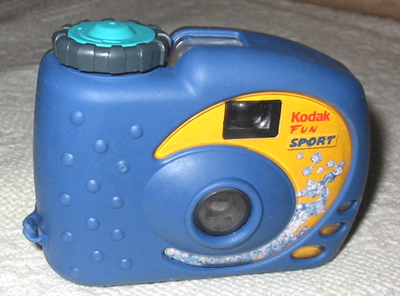
Kodak disposable
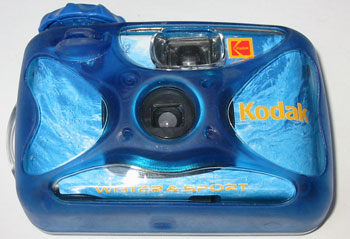
Kodak water and sport camera
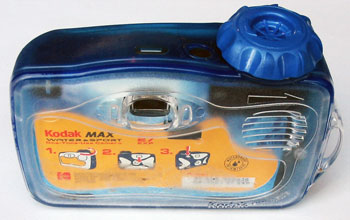
|